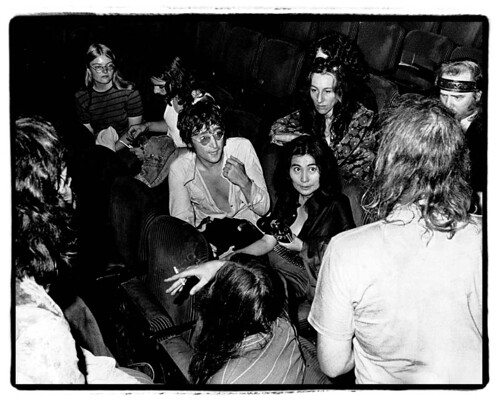Earlier today, we wrote about the Fillmore East, one of the more remarkable properties within the confines of a proposed landmark district. The unofficial house photographer of the Fillmore East, Amalie R. Rothschild, shared her photos and memories from the theater’s brief yet influential existence from 1968 to 1971. — Stephen Rex Brown
Read more…
AMALIE R. ROTHSCHILD
Viewfinder | The Fillmore East
By AMALIE R. ROTHSCHILDLooking Back | The Fillmore East
By STEPHEN REX BROWN Amalie R. Rothschild A huge crowd formed around the Fillmore East in May 1970 when tickets went on sale for Crosby, Stills, Nash and Young.
Amalie R. Rothschild A huge crowd formed around the Fillmore East in May 1970 when tickets went on sale for Crosby, Stills, Nash and Young.The push to preserve blocks of the neighborhood through a landmark district has, not surprisingly, led to a lot of conversations about the history of the area. The proposed district covers roughly six blocks, and perhaps no property within the tract has hosted more important figures in American culture than the former Fillmore East building at 105 Second Avenue.
Now, the entrance to the building is an Emigrant Savings Bank, and the 2,600-seat theater has been replaced with an apartment building. But the Fillmore’s three-year existence had a lasting impact culturally; Jimi Hendrix, Joe Cocker and Miles Davis all recorded well-regarded live albums there. The Who played their rock opera, “Tommy” in its entirety for the first time in the United States in 1969 at the Fillmore East. And the first rock concert to be broadcast on television was taped there in 1970.
But the Fillmore’s impact went beyond the performers onstage. Numerous technological innovations during the theater’s short existence were adopted at concert venues across the country.
“I was blown away by what a creative, experimental theater environment there was at the Fillmore East,” said Amalie R. Rothschild, a photographer who was among the many NYU students who landed dream jobs at the Fillmore when it opened in 1968. “It was a real place to do real things. The students had a live laboratory within which to work.”
Read more…




